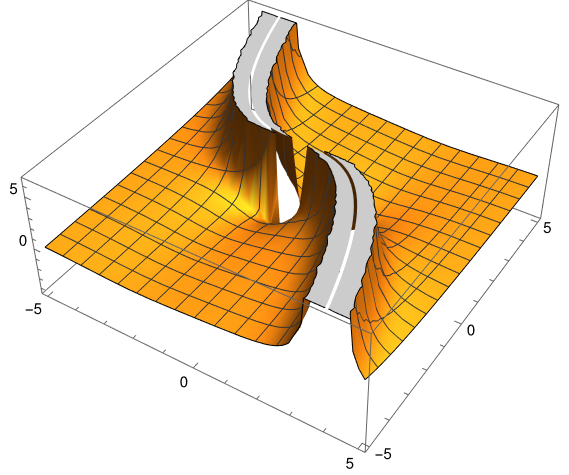Students seeing differential equations for the first time expect every equation to have a nice closed-form solution, because up to that point in their education nearly every problem they’ve seen has been contrived to have a nice closed-form solution.
Once you resign yourself to the fact that a differential equation will rarely have a closed form solution, it’s a treat when you run across one that does. This is especially true for nonlinear equations.
The Korteweg–De Vries (KdV) equation is
is such a treat. I wrote a few days ago about the sech² solution to the KdV equation.
There’s also a rational solution:
We can verify this is a solution to the KdV equation reusing the Mathematica code from the earlier post.
u[x_, t_] := u[x_, t_] := 6 x (x^3 - 24 t)/(x^3 + 12 t)^2
Simplify[ D[u[x, t], {t, 1}]
- 6 u[x, t] D[u[x, t], {x, 1}]
+ D[u[x, t], {x, 3}] ]
This simplifies to 0.
Here’s a plot:

The top of the plot looks like a two-lane road on top of a mountain ridge, with a sinkhole in the middle of the road.
The “road” is a artifact of plotting. The solution is singular along the curve x³ + 12t= 0, and Mathematica had to chop the top of the graph off because it can’t plot an infinitely tall function.
